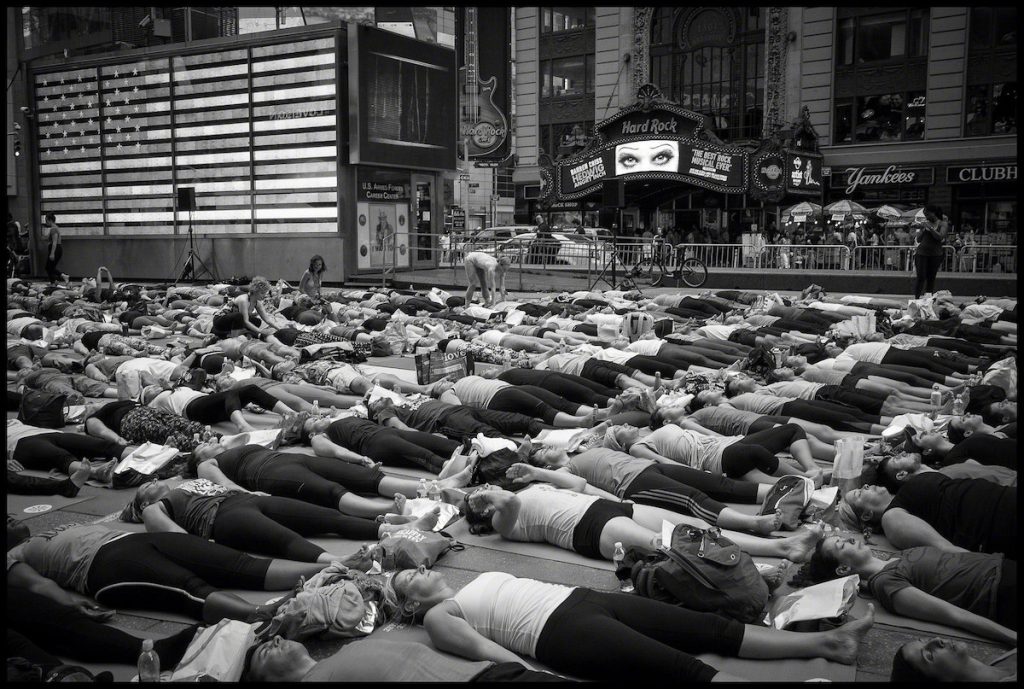The end of the year arrives quickly, and often we feel a sense of urgency. Our pace quickens, both individually and collectively. In order to maintain balance during this time, we must slow down and prioritize rest. The sustained periods of darkness in the winter present many opportunities to move inward and engage in relaxing practices.
Savasana, a yogic practice that encourages rest and relaxation, is a Sanskrit word that combines sava (corpse) and asana (seat or connection). In the practice of yoga, savasana is often the last posture during which practitioners lie down and rest.
This simple practice can have profound effects. Physically, savasana allows the body to recuperate from physical exertion and intense mental concentration. The practice, however, also has deep spiritual implications; in savasana, practitioners assume the position of a corpse and invite the experience of death through means of deep relaxation. In the Tibetan Buddhist practice of phowa (samkranti in Sanskrit), practitioners consciously prepare for death through acts of meditation and devotion. Savasana is more passive. There is very little effort. Through the complete release of the body and mind in savasana, a person can practice the difficult and necessary task of letting go.
Related: Breathe Easy: Two breathing exercises to help steady the mind before meditation
To prepare for savasana, choose a quiet room with low lighting where you will not be disturbed. Ensure that the room temperature feels comfortable and there are no drafts. Consider playing ambient or atmospheric music at a low volume. Set up a yoga mat on the floor or lie down on a soft carpet.
Create a thick roll with several towels or a heavy blanket. Lie on the back, place the roll underneath both knees, and extend the legs. Separate the feet six-to-eight inches apart and let the feet fall out to the sides. Place a pillow or another blanket underneath the head. Move the arms a few inches away from the sides of the body and turn the palms face up. You can also cover yourself with a blanket. Close the eyes.
Begin to slowly scan the body to identify areas of tightness. Start with the toes and progress to the top of the head. If you find an area of tension, linger there and silently invite relaxation. For example, if you sense a holding in the abdomen, silently suggest “abdomen, relax.”
Once you complete the scan, let go. Relax. Don’t follow the breath. Don’t watch the mind or observe the body. Don’t consciously practice anything. This is savasana. Remain in the posture for at least 15 minutes and as long as 30 or 45 minutes. Setting a timer can be helpful.
Related: A Head in Front of the Body: A short mindfulness of body practice to prevent anxiety
The practice of savasana helps us welcome a state of rest while we’re awake; however, if you find yourself falling asleep, let it happen. This is often a sign that the body needs more sleep in general. You may find that after an adequate night’s rest, you can incorporate periods of deep relaxation into your practice without falling asleep.
To come out of savasana, emerge slowly. First, take a few deep, slow breaths. Make small movements. Wiggle the fingers and the toes. Reach the arms over the head and stretch the arms and legs in opposite directions. Bend the knees and roll onto the right side into a fetal position. Stay here for as long as you feel comfortable. Then, lift up to a seated position.
In my experience of savasana, I’m still very much aware of my physical and mental state during the first few minutes. I shift. I twitch. My mind replays conversations from earlier in the day. Then, my body gradually begins to feel very heavy. I sometimes experience a sensation that feels like I’m floating away. I’m not asleep, but I’m also not actively engaged in a conscious awareness practice. After savasana, I often feel rested, calm, and refreshed.
This season, practicing savasana may help us move deeper into the darkness, experience deep relaxation, and perhaps discover something brighter.
[This post was first published in 2015]
Thank you for subscribing to Tricycle! As a nonprofit, we depend on readers like you to keep Buddhist teachings and practices widely available.
